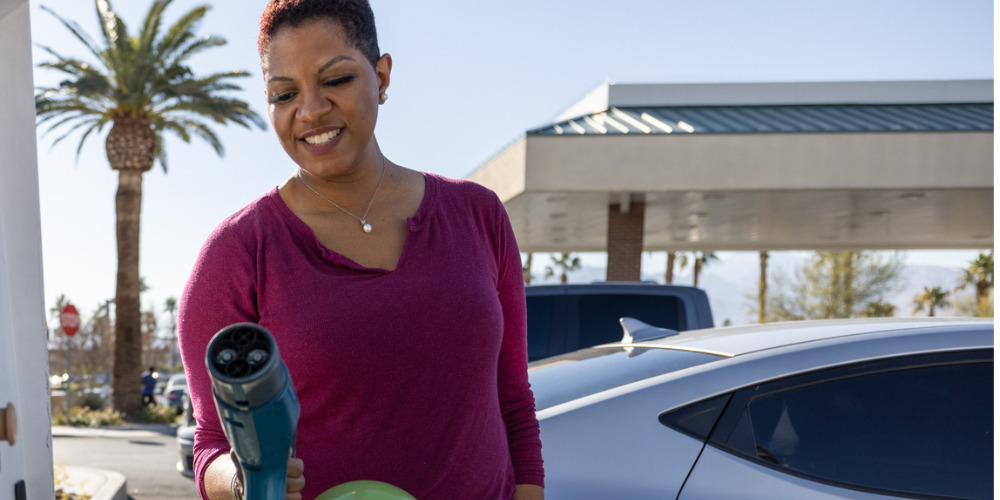Barriers to electric vehicle adoption addressed by community-based outreach campaign
Luskin researchers document lessons on how to improve equitable access to clean vehicles for underserved households
Photo credit: LPETTET / iStock
By Mara Elana Burstein
How can we achieve an equitable climate transition when low- to moderate-income households face disproportionate barriers to clean vehicle adoption? A new Luskin Center for Innovation report helps address this by documenting a community-tailored education and marketing campaign that helps underserved households replace their inefficient cars with electric vehicles (EVs) via improved information, including about the financial incentives available to low-income drivers.
The campaign was led by the nonprofit Valley Clean Air Now, the marketing firm Maritz, and community-based organizations (CBOs) Redeemer Community Partnership and the Latino/a Roundtable of the San Gabriel and Pomona Valley. The six-month campaign started with a baseline survey of low- and moderate-income households who were interested in purchasing an EV. The CBOs then used social media and follow-up calls to identify barriers, provide information and assistance, and track reasons for participants’ interest (or disinterest) in purchasing a clean vehicle.
“These informational campaigns have the potential to reduce barriers to EV adoption” explained Rachel Connolly, a project director of the Luskin Center for Innovation and lead researcher on this study. “The CBOs are able to apply local knowledge to reach target populations.”
Lessons Learned
The campaign successfully reached low- and moderate-income populations, both to provide education and to collect information on participant demographics, EV preferences and knowledge, as well as vehicle purchase constraints.
Interviews with the CBOs highlighted successes and challenges in the community-tailored outreach approach. On Facebook, community members questioned and expressed concerns about EVs, including cost, access to charging stations, and the trustworthiness of incentive programs. CBO staff responded with facts, dispelled misinformation, and found that individuals were more open-minded over the phone than on social media. This highlights the need for tailored outreach to each specific community, as well as the value of personal conversations with interested participants.
The campaign identified a significant limitation of EV incentive programs for lower-income households because they do not support immediate EV purchases for immediate vehicle replacement. Many households only have one vehicle and cannot afford to wait for months for a rebate. The study also showed that lower-income households value a smaller upfront price more than low ongoing payment amounts.
“Existing financial incentive programs for vehicle replacement are incredibly valuable, but can only reach a limited number of households,” explained Gregory Pierce, co-director of the Luskin Center for Innovation and an author of the study. “These types of campaigns can reduce misinformation about EVs and support clean vehicle adoption in lower-income households.”
Community-based campaigns are one tool that can be used to reach underserved populations to encourage EV adoption as California transforms to a zero-emissions transportation system.
To learn more about the findings, access the report here. For more research on equity-centered clean transportation, visit our transportation webpage.








